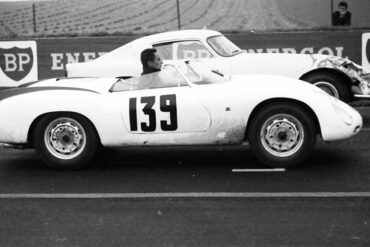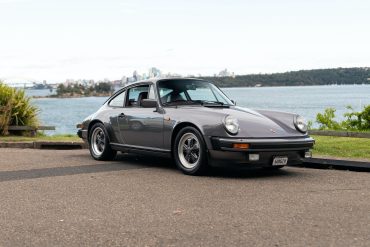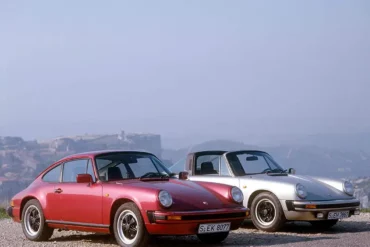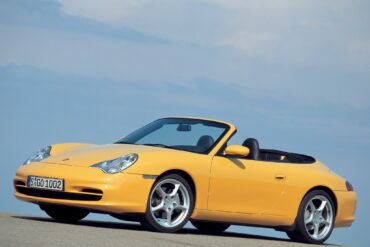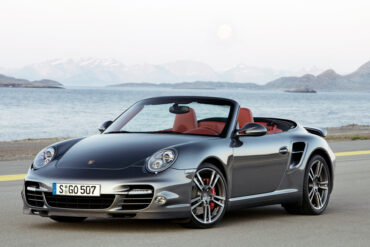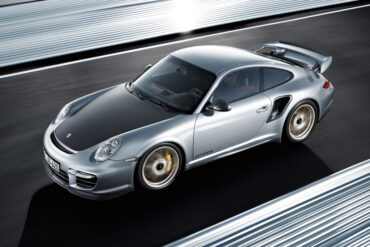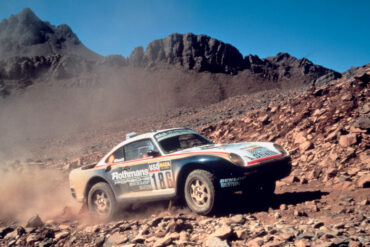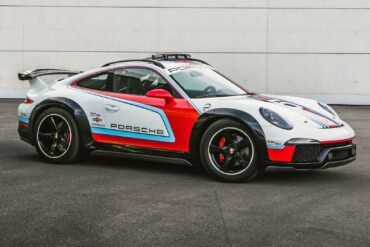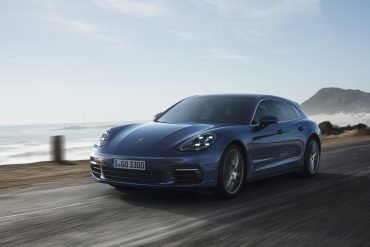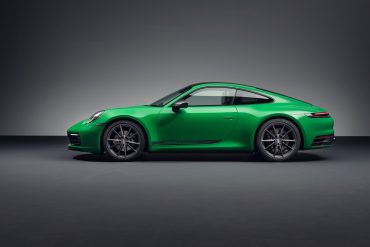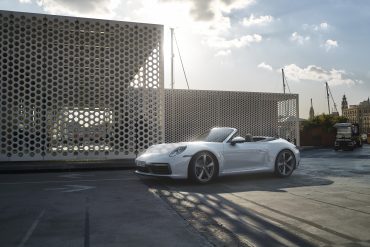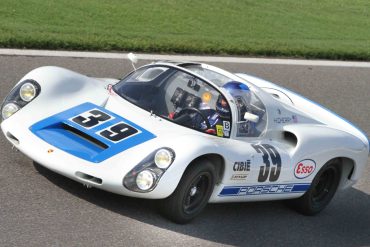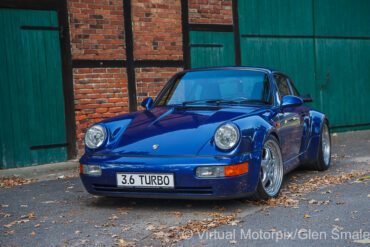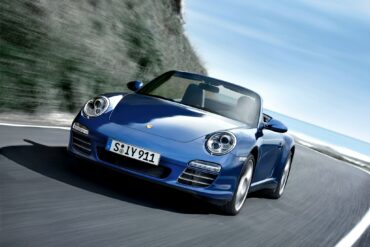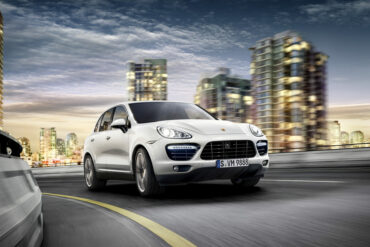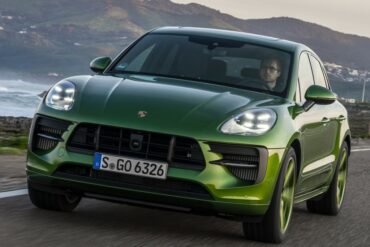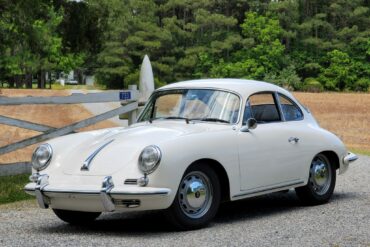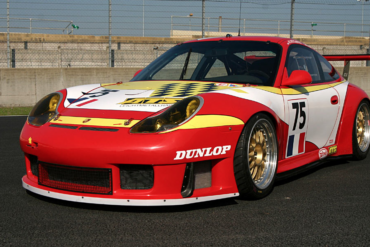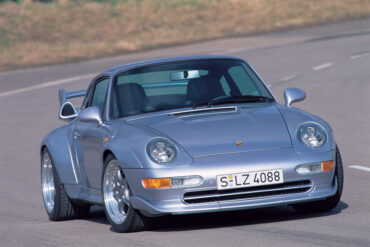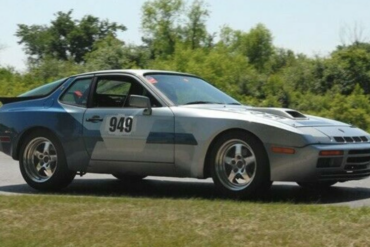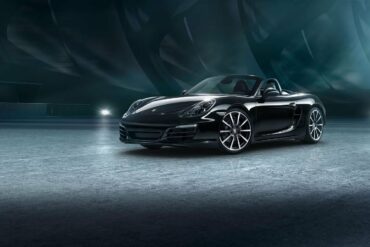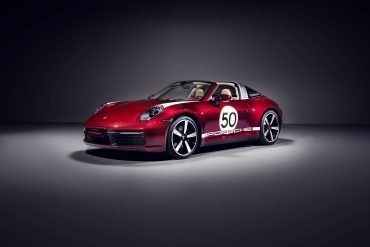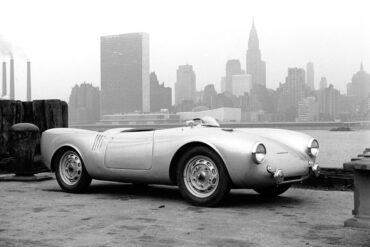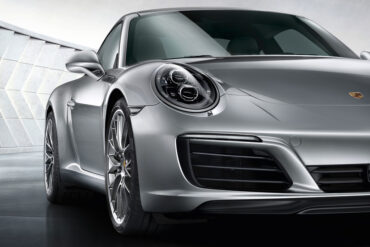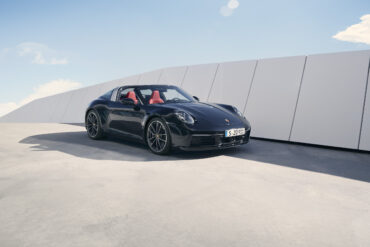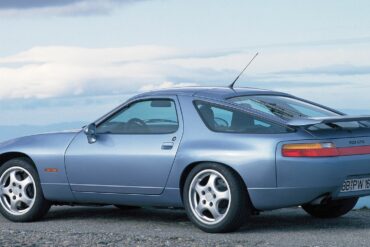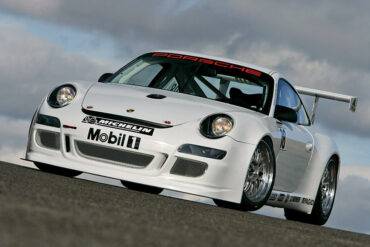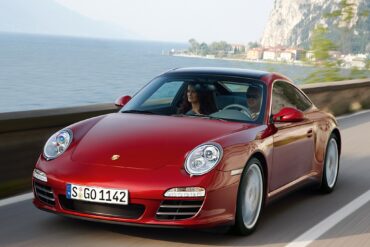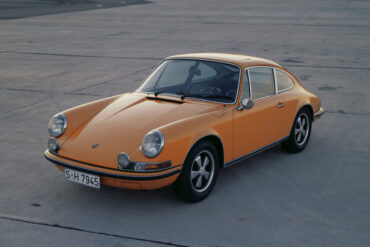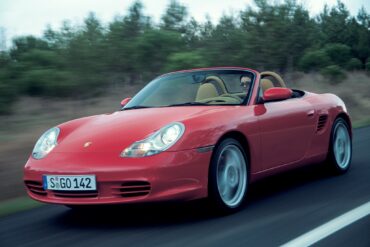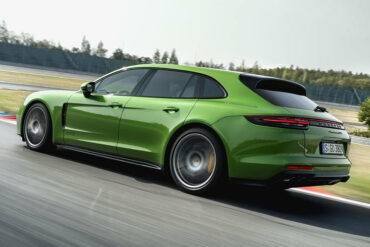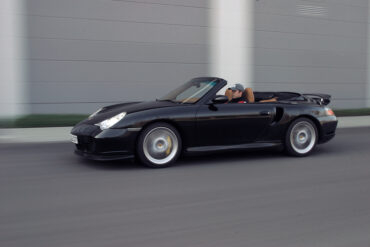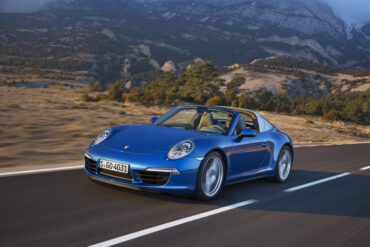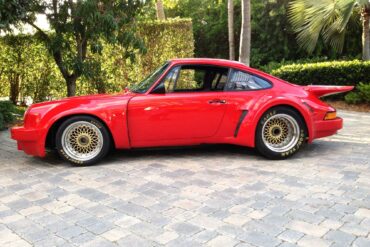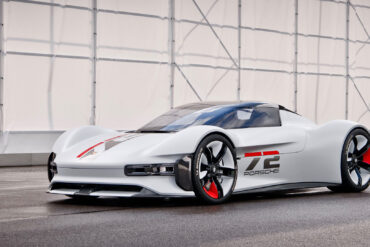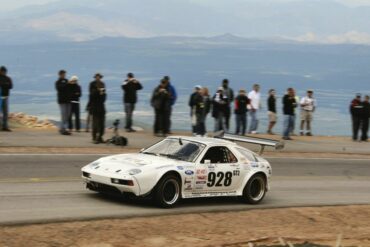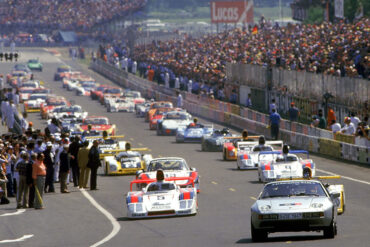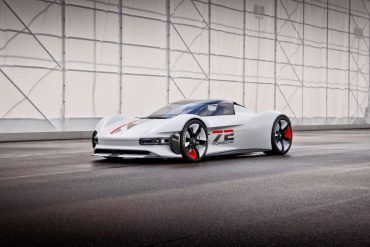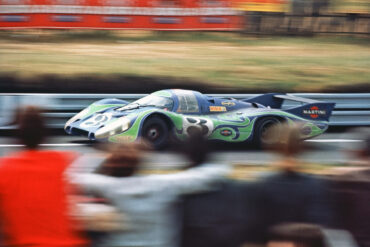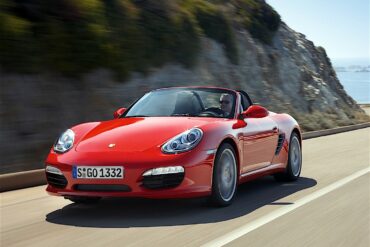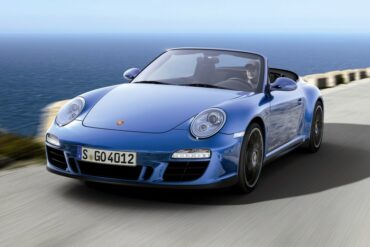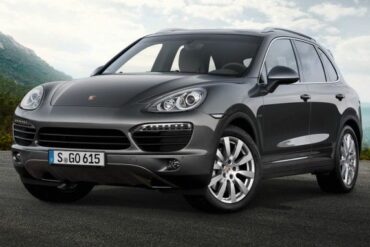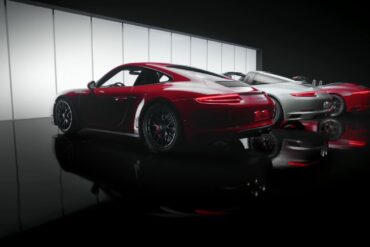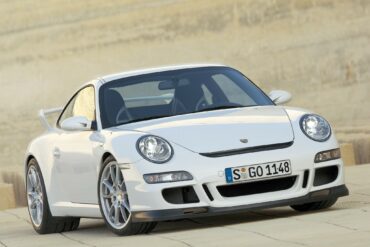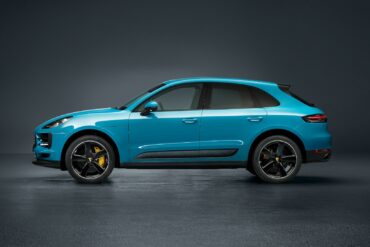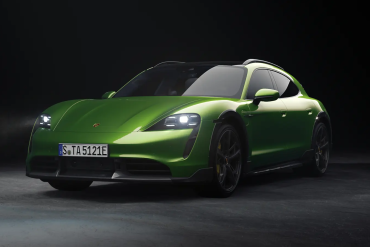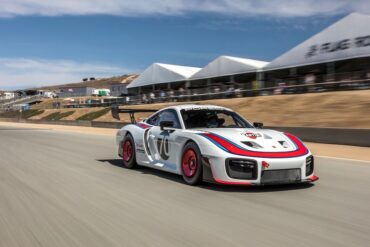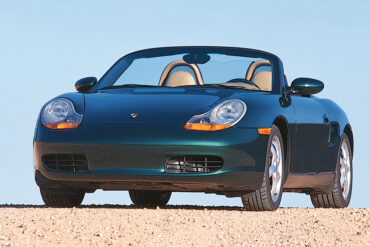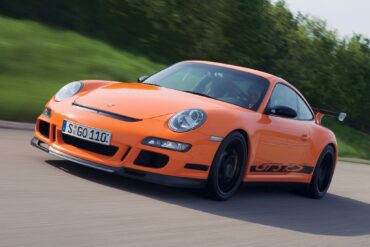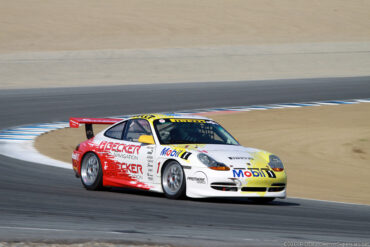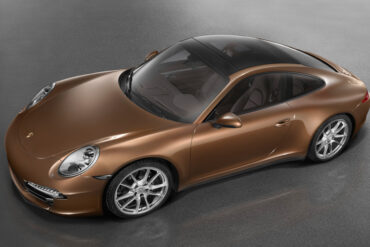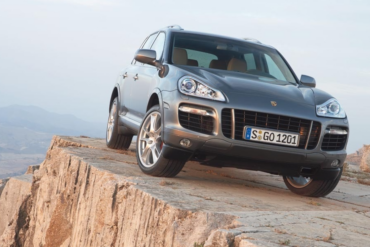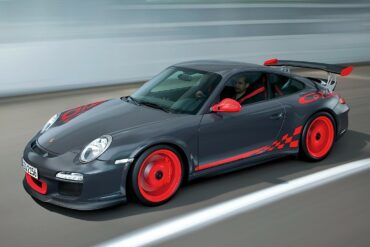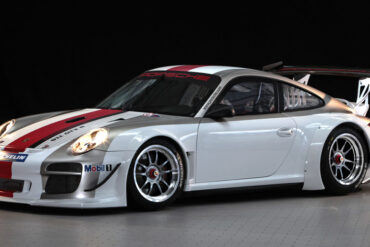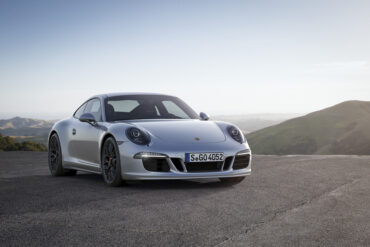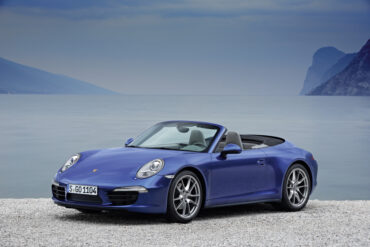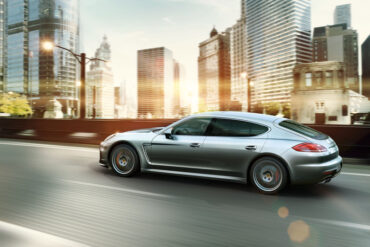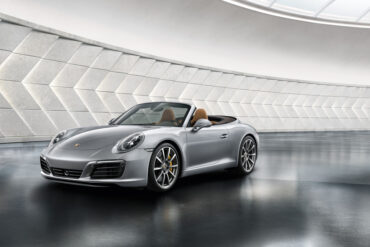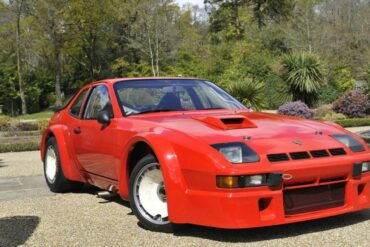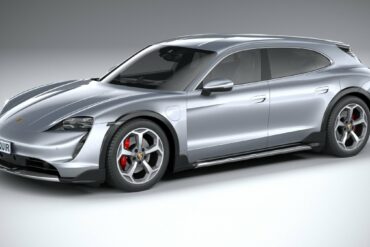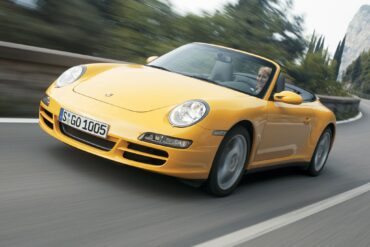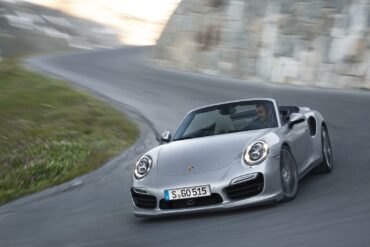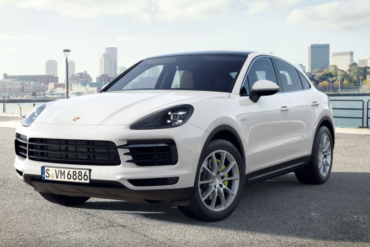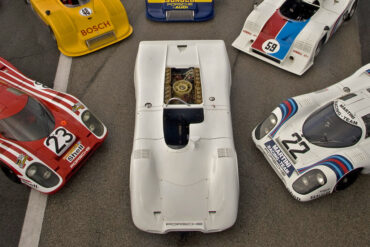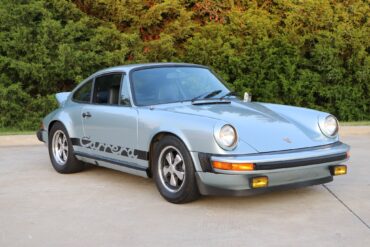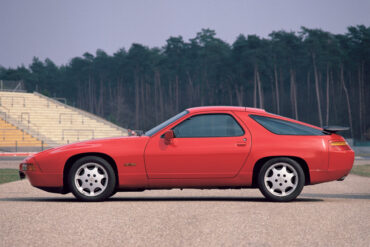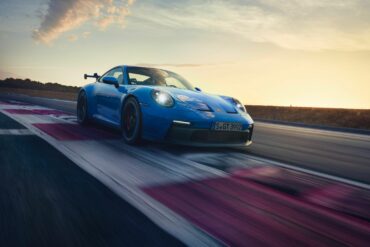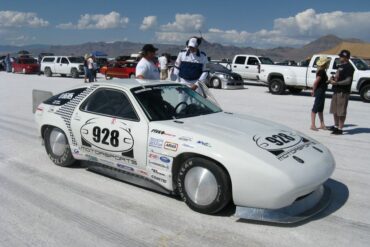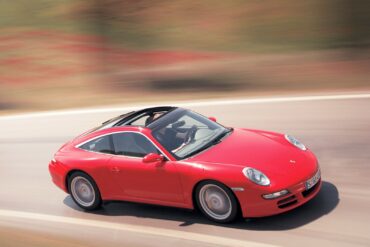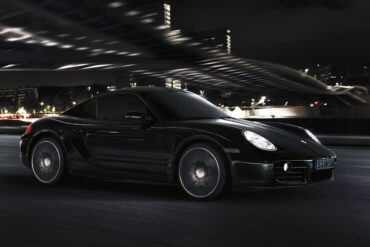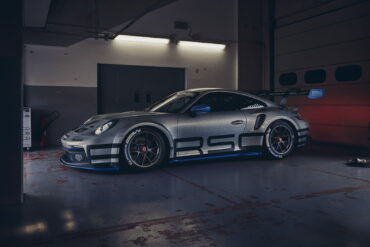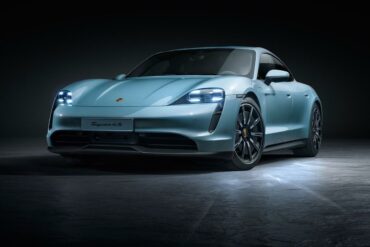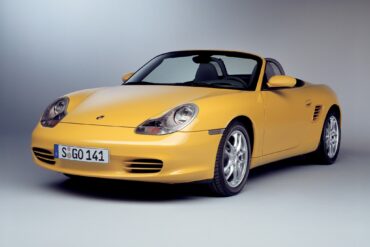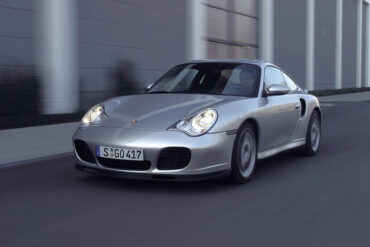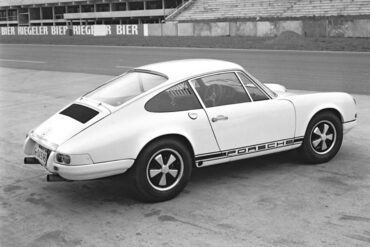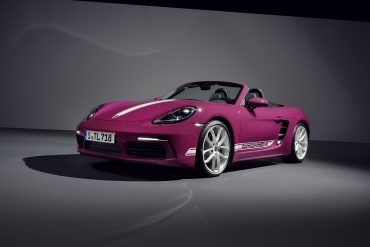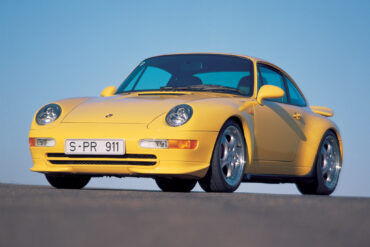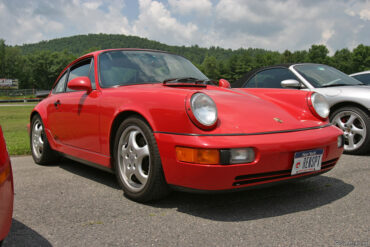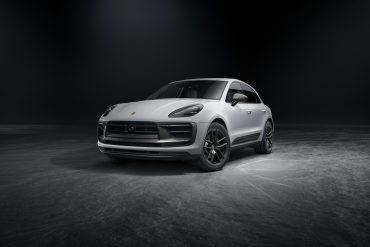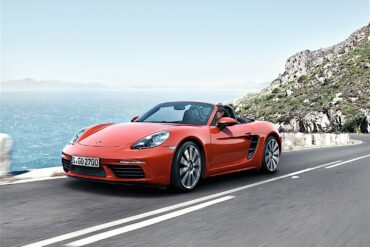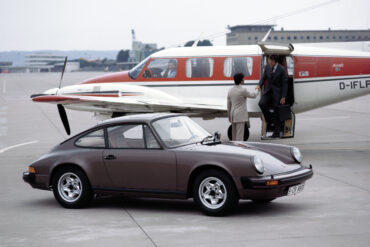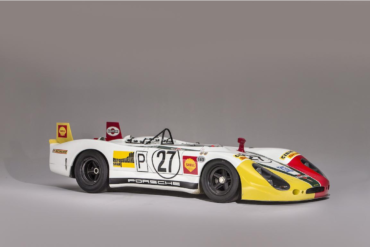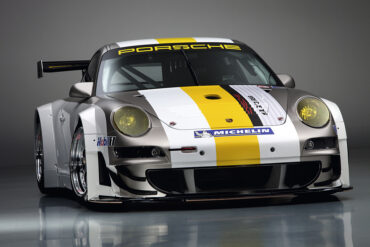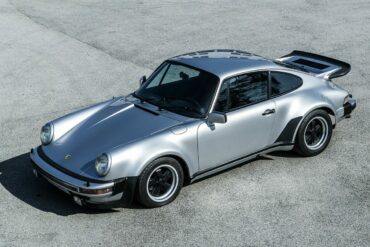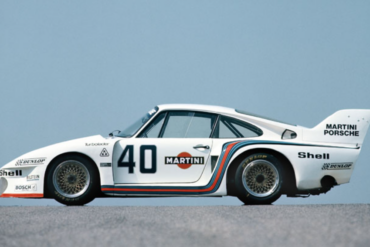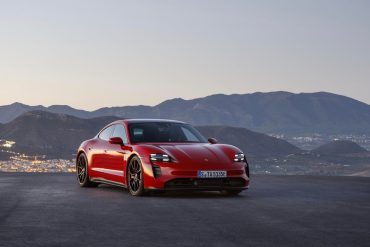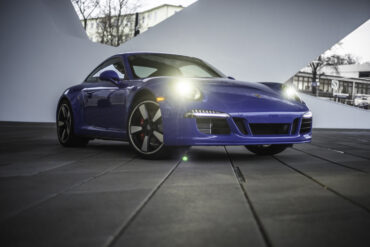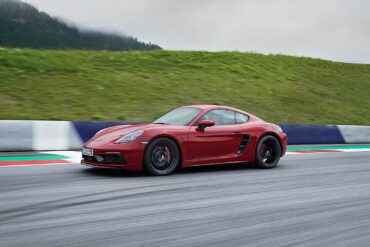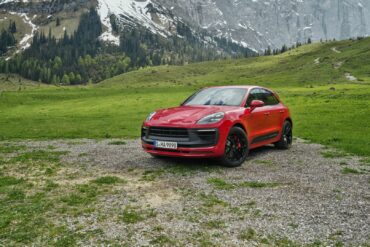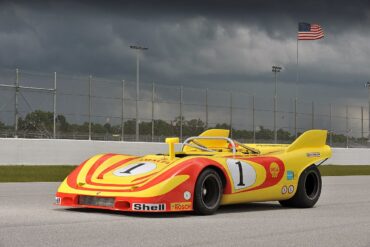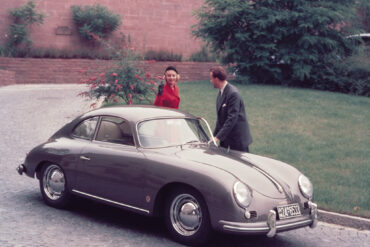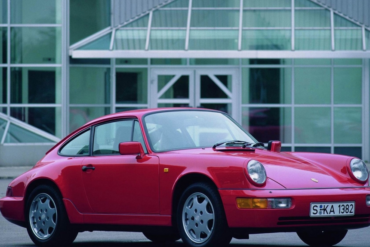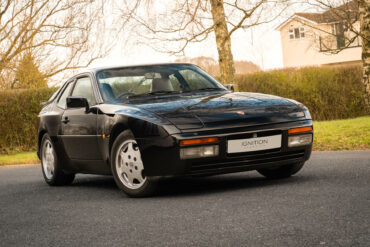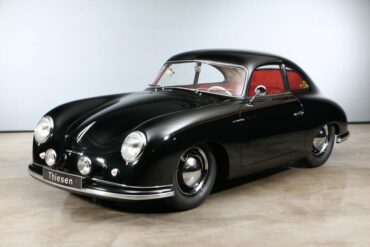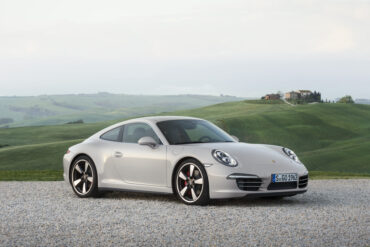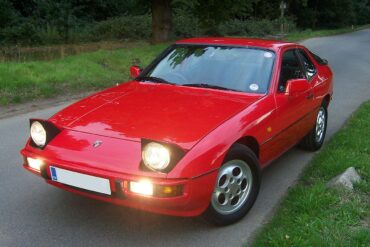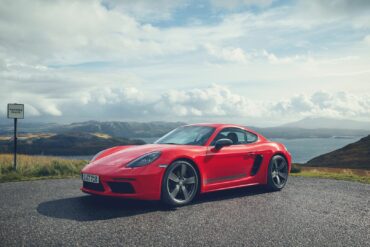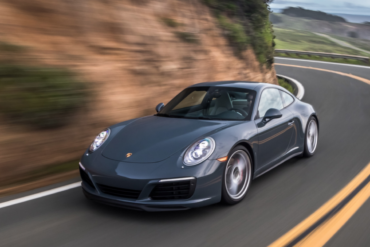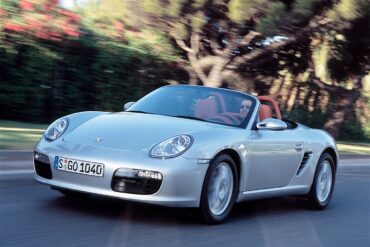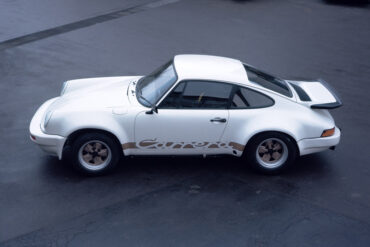The original Porsche Carrera Zagato Speedster, the first Zagato bodied Porsche of the brand’s history, was built in 1958 for French gentleman driver and expert Porsche pilot Claude Storez, one of the best French pilots of that time. He started his career in early 50s and became soon a skilled pilot. In late ’57 he was looking for the “ultimate” 356 for the 1958 races season. He put an order to Porsche AG for a 356 A Speedster (the lightest version available) with a Carrera engine and GS specs (the most powerful at that time).
Finally, in 1982 the model 911 SP 'Ferry Porsche' was introduced as a special edition to celebrate 50 years of Porsche. This special edition was finished in Meteor metallic paint with burgundy leather interior and a 'Ferry Porsche' signature on the headrests. Only 200 of these now-classic special cars were built (130 Coupes and 70 Targas). The 911 SC “Jubilee” or “Ferry Porsche” is the first “limited series” sold in Europe.
The 911 SC effectively replaced the 911 S and was one of Porsche's first models that was meant for the international market. It was sold as a cheaper alternative to the 911 Turbo. The SC used an unblown version the 930 Turbo unit that offered 180 to 200 bhp depending on model year. Options included the rear whale tail, front chin spoiler, Bilstein dampers, 16 inch wheels with Pirelli P7 tires and sports seats. Sometimes dealers lumped these options together to create their own sport package. It was available as a Coupe and Targa from 1978 - 1983, while the Cabriolet version was only available in 1983.
Designed as a grand tourer, the Porsche Carrera 4 Cabriolet was the base all-wheel-drive version for the open-top 911 range in 2001. It offered enough comfort to be used as a daily driver, on all weather. The 996 Porsche was facelifted in 2002. Along with the coupe versions, the convertibles were reshaped also. There was not a big difference on the outside. It was the same sports-car and open-top grand tourer. The Carrera 4 Cabriolet, continued on through 2004, receiving the same updates as the Carrera, including the 3.6-liter engine.
The 997.2 Turbo was introduced for the 2010 model year and received a new 3.8 litre engine capable of 493 horsepower, a significant evolution as compared to the 473hp in the 997.1 Turbo. The 997.2 Turbo was available in both manual and automatic transmissions, but the automatic evolved from the Tiptronic used in its predecessor, to a sportier dual-clutch PDK. Approximately 3,300 coupes were produced and 1,800 cabrios, far less than its predecessor. An epic all-around GT with more performance than you could ever need.
Porsche’s 911 GT2 RS is a brute, a lightweight, twin-turbocharged, 620-hp bout of madness that stemmed from Stuttgart’s quest to see how high up the sports-car ladder the 911 could punch. It is the most serious roadgoing Porsche ever. The engine is a port-injected, 3.6-liter flat-six from the Le Mans–winning GT1 race car of the late ’90s, with a pair of variable-geometry turbochargers huffing a maximum of 23.2 psi of boost into the combustion chambers. The result is 620 hp at 6500 rpm and 516 lb-ft of torque at 2250. It gets a six-speed manual gearbox and rear-drive only. Yikes.
The 959 took both first and second place in the 1986 Paris-Dakar rally. For 1986, the Dakar Porsches finally got all the upgrades from the 959 project, including the active four-wheel drive system offering four driving modes adjusted by the computers. This gave Porsche a 1-2 finish, with supporting 959 Dakar engineer Unger Kussmaul crossing the line at sixth. Once the champagne had dried up, Porsche deemed its Dakar program accomplished.
The Porsche 911 Vision Safari a sports car-based rally car concept, designed and built by Porsche in 2012, based on the Porsche 911 (generation 991) and harkening back to the original car, the Porsche 911 SC Safari from 1978. Features a raised suspension, reinforced wheel housings and large bumpers.
In 2017, at the Geneva Motor Show, Porsche introduced the Sport Tourismo version. It is like a station wagon but has the look of a Shooting Brake. With this design, the Panamera is further away from the 911 rear design. A larger trunk means more space for luggage and golf bags. If the rear seats are folded, the total trunk space can reach 1390 liters (49 cu-ft). In 2017, Porsche installed a V8-diesel engine in the Panamera Sport Tourismo.
The return of the Touring badge, now on the Type 992. In a way, the car may seem sparingly equipped, and apart from the paint color, the wheels, and if you want a 7-speed manual or 8-speed PDK, it is. But it’s what it’s equipped with that makes the Porsche drivers smile. The purist-focused Carrera T is perfectly specced for fun, with its sweet rear-wheel drive, no rear seats, and a manual gearbox for just $118,050.
The Carrera 4 is the base model 911, equipped with all-wheel drive. It starts at $109,850 for 2022, which is about $7,000 more than the standard rear-drive Carrera. Other than the additional all-wheel-drive system and the 150 odd pound increase in curb weight, the Carrera 4 is identical to its rear-drive sibling. It gets the same 379-hp, twin-turbo 3.0-liter flat-six engine. The twin-turbocharged 3.0-liter flat-six has 379 hp.
Porsche 910 was the evolution of the 906 with Ferdinand Piëch as its main driving force and Hans Mezger as the head engineer. It came before 907, 908 and 909. Compared to the 906, the 910 had 13" Formula 1 wheels with central locking (906 had 15" 5-bolt wheels), more rounded design everywhere and the roof panel was removable. Because of the targa roof, the cool-looking gullwing doors of the 906 had to be forgotten.
Engine based on modified 3.6 litre 964 unit. Speedline wheels with big red brake calipers. Lessons learned in the Carrera Cup series proved the reliability of the new 3.6-litre engine. An additional three millimetres on the bore and two millimetres on the stroke, resulted in an increase in capacity of 300 cc. Combined with the turbo optimised cylinders, pistons and crank train, and an increase in the compression ratio from 7.0 to 7.5:1, this helped to boost power to 360 bhp. Torque was increased significantly to 520 Nm at 4200 rpm, up from 450 Nm at 4500 rpm in the earlier car.
In the case of the 911 Carrera 4S Cabriolet that begins with a larger, more potent six-cylinder engine. The Carrera 4S is powered by a 3.8-liter flat six that produces 355 horsepower and 295 lb.-ft. of torque. The roughly ten percent increase in power translates to improved acceleration and higher top track speed. The 911 Carrera 4S Cabriolet with the six-speed manual gearbox races from a stop to 60 mph in only 4.7 seconds, topping out at the track at 185 mph. When carrying the optional Tiptronic S transmission, the zero to 60 mph sprint takes a mere 4.5 seconds.
As the flagship of the Cayenne army, the Turbo S was well received by those who were looking for a faster SUV. And it wasn't only the speed, but also the cornering speed that the Turbo S was capable of. The engine was based on the 4.8-liter V8 unit installed in the Cayenne S and Cayenne Turbo, but with a higher compression ratio that led to 50 more hp. The standard transmission was an 8-speed Tiptronic S.
The GTS returned to the lineup for 2020 after a year off. Its twin-turbo 2.9-liter V-6 makes 375 horsepower and 383 lb-ft of torque. Quickness is important in a crossover with sporting intentions, but we love the way the GTS handles and acts like a true sportscar. Apple CarPlay, available as part of the Premium package or as a standalone option, gains wireless connectivity, while wireless device charging has been added to the designated Smartphone Compartment option.
The Porsche 356 SC, was the top-of-the-line variant in terms of performance for the 356 C Generation, sporting the highest specific output pushrod 4-cylinder engine ever available from Porsche with 107 HP. The SC engine produced 107 bhp at 5200 rpm and featured a stouter counter-weighted crankshaft, short skirt pistons, a more radical camshaft configuration, and large Solex carburetors. The SC was the natural successor of the previous generation Super 90 and represented the top-of-the-line variant for the final evolution of the Porsche 356.
In the 2000 FIA GT Championship, the 996 GT3 R was the dominant racer in the new N-GT class and won every run. In the same year, the factory-supported Phoenix Racing won the 24-hour race at the Nürburgring. In 2001, the modified version, now called the 996 GT3 RS, was used. The vehicle was not only very successful in its class, it also achieved overall victories. Modelled on the 911 GT3 R, the GT3 RS race cars offered a number of technical improvements, which combine to ensure a racing car with optimal competitiveness. 50 racing cars were produced.
The Porsche 911 GT2 (or GT as it was initially called) from the 993 Porsche series was built in order to meet homologation requirements for the GT2 class racing which had banned all-wheel-drive vehicles by the mid 1990's. As a two-wheel drive vehicle, the GT2 had significant weight savings as compared to the standard 993 Turbo from Porsche, making it instantly competitive in racing. The 993 GT2's original 3.6 L (220 cu in) engine generated a maximum power output of 316 kW (430 PS; 424 hp). There was an update in 1998 that upped power to 450 bhp.
In 1983, American tuning company Callaway Cars began offering a turbocharged package for the US-Spec 944 in collaboration with Porsche. The standard 2.5 L inline-four engine was not suitable for forced induction because of the higher compression ratio of 9.5:1 which made the engine prone to failure when subject to forced induction along with the complex Bosch Motronic engine management system.
The mid-engine roadster is powered by the 2.7 liter flat-six engine with 265 hp. Its color concept remains consistent with the soft top and supplemental safety bar which are both finished in black. The wind deflector reduces undesirable turbulence when the soft top is down. 20-inch Carrera Classic wheels and the Bi-Xenon™ headlights with Porsche Dynamic Light System (PDLS) set distinctive highlights, while standard two-zone air conditioning and heated seats provide a higher level of comfort for both driver and passenger. The Porsche Communication Management system is included as standard.
The Porsche 911 Targa 4S Heritage Design Edition showcases what is possible with Porsche's Exclusive Manufaktur program and what to expect from Porsche's Heritage Design Strategy. Inspired by the 356 and previous generations of the 911, Porsche's Heritage Design Strategy is bringing period-correct design cues into the current 992 generation 911. Cherry Metallic is the stunning color. Limited to just 992 units globally.
In 1953 Porsche created a series of 550 prototypes and 550-03 became the most important car in Porsche history by winning the 1954 Carrera Panamerica with Hans Herrmann at the wheel. This singular victory lent the Carrera nameplate to future models and also marked the first international victory of a mid-engine car. Only 15 prototypes were made until regular production began in 1954 of the Porsche RS Spyder.
Porsche purists might moan that the flat-six engine in the rear is no longer naturally aspirated, but with more power and torque, improved efficiency and some advanced interior tech giving this 911 an even bigger breadth of ability than before, this facelifted 991-generation model carries on where the old car left off. Sure, it’s lost a touch of that high rev zing from the old car, but if you add the sports exhaust, the bark from the engine inside and out is still intoxicating. And so is the speed. The 991.2 Carrera S is absolutely amazing on both road and track and still the best sports car around.
Like the standard 4S, the Targa 4S produces 443 bhp @ 6500 rpm from a six-cylinder, 3.0-litre boxer engine with twin turbochargers, and puts it to the road via an eight-speed PDK and Stuttgart's refined all-wheel-drive system. 390 ft lbs from as low as 2300 rpm also means you have tons of mid-range power on tap for any situation. Compared to the previous generation Targa 4S, the new model is up 23 hp and 22 ft lbs of torque.
The last evolutionary stage of the 928 model featured flared rear wings, a red light panel at the rear, a rear wing painted in exterior colour, exterior mirrors in the Cup design plus 17" Cup rims as standard. The 5.4-litre engine of the GTS generated 350 hp. The 928 GTS came for sale in late 1991 as a 1992 model in Europe and in spring of 1992 as an early 1993 model in North America. Changed bodywork, larger front brakes and a new, more powerful 5.4 L engine were the big changes.
The Porsche 997 GT3 Cup was a series of race cars created by Porsche to enter the Fédération Internationale de l’Automobile (FIA) Group GT3 racing class. Replacing the 996 GT3 Cup, the 997 Cup's 3.6 litre engine is rated at 294 kW (400 PS; 394 hp) and was mated to a six-speed sequential transmission. In 2009, the GT3 Cup received several 997.2 updates including a new 3.8 litre engine with an output of 331 kW (450 PS; 444 hp).
As with the previous 996 Targa model, the most striking feature of the car is the large, sliding-glass roof and glass rear hatch, which blend sleekly into the classic 911 lines while providing the Targa with its own unique personality. Like the rest of the range the Targa 4S got a visual refresh and the all-new direct injection engine. In the Targa 4S, it produced 380 bhp @ 6500 rpm and torque of 310 ft lbs @ 4400 rpm. 0 - 60 mph takes just 4.5 seconds (PDK) and top speed is 185 mph.
1970 Porsche 911 S 2.2 Coupé Along with all the C-series improvments to the 911 line, the 1970 Porsche 911...
The Boxster S was revised along with its Boxster version in 2003. From the outside, the 2002 Boxster S featured an apron with three air-intakes, one more than the non-S version. The 3.2-liter unit was installed in the Boxster since 2000, but after the facelift it was improved by 10 hp, reaching 258 hp. It was paired as standard with a 6-speed manual, or a 5-speed Tiptronic (automatic) as an option. As expected, the manual version was quicker and faster.
For the 2019 model year, the second-gen Panamera is now a beneficiary of the badge - which actually stands for ‘Gran Turismo Sport’ - that has come to represent the pragmatist’s choice of Porsche automobile. The Panamera GTS is also now available in a long-roof wagon body style, dubbed the Sport Turismo. In totality, this is the vehicle I will be writing about - the 2019 Porsche Panamera GTS Sport Turismo. Traditionally speaking, the GTS version of any Porsche has typified a “sport-plus” version of a mid-level trim within the model range.
Towards the end of the 996 production run, Porsche introduced the Turbo S, boasting even more power than the standard 996 Turbo — 450 PS (331 kW) and 620 N·m (457 lb·ftf)— courtesy of the X50 package being standard. The Turbo S was limited to approximately 1,500 units worldwide, of which 598 were coupé (hardtop) and 960 were cabriolet (convertible). It was available with a 6-speed manual or an automatic (Tiptronic S) transmission, driving power to all four wheels. The basic price is EUR 122,500 for the Turbo S Coupé or EUR 131,100 for the Turbo S Convertible. Sprints from zero to 200 km/h in 13.6 seconds.
For this 991 generation Targa, Porsche went back to the original Targa concept, albeit with an even sexier design and some very cool technical tricks to boot. Porsche wanted to resurrect its classic design, but the company feared that owners would not want to get out of the car, lift off the roof panel, and stow it in the trunk. The other issue was, in the words of 911 product line director Dr. Erhard Mossle, "that the manual solution was a little bit old-fashioned." The 911 Targa 4 gets the same 350 horsepower, 3.4-liter six-cylinder motor as its hardtop siblings.
When I’m not helping to sell the occasional old race car, or visiting old race car meetings, I’ve usually got...
The Porsche Vision Gran Turismo concept is designed for the PlayStation video game, Gran Turismo 7. Porsche, like other automakers, has designed a car specifically for the game. While it may seem like a mid-engined sports car, the Porsche Vision GT is a pure EV. It features no traditional doors. Instead, the upper canopy opens up at the front to access the cockpit. The pure EV uses an 87 kWh battery that would last for 310 miles. The peak power output is a bit under 1,300 hp from an all-wheel-drive setup. The Porsche VGT can accelerate from 0-62mph in a plausible 2.1 seconds and max out at 217mph.
In 2007, 2008 and 2009 American racing driver Carl Fausett took his specially prepared and supercharged 1978 Porsche 928 to the Pikes Peak International Hill Climb and competed in the Open Division. Fausett placed third in the Open Division in both 2007 and again in 2009, where he was also the fastest 2WD car. At that time, much of the race course was gravel.
For the 1978 Le Mans, Porsche created two new 936/78. The first one was built using chassis 936-001, which had already served for the 936/76 and 936/77. The second car was built on a new chassis and numbered 936-003. Because of the new water-cooled 24-valve engine, the 936/78 came with huge NACA ducts on the sides for the radiators and a new rear end with hanging spoiler.
If you’re like a few of us here at the StuttCars office, you’re the kind of person who has gained...
With the aerodynamic instability of the 917 in the 1969, two separate configurations were used in 1970. These were the short-tail Kurzheck version and the less common Langheck or long-tail. Most of the 917's accolades were achieved by the 917 Kurzheck, leaving the Langheck a less popular, but ultimately just as potent contender.
The 2008 facelift of the Boxster S is powered by a new direct-injection 3.4-liter Boxer engine which develops more power than the earlier variant. The styling got a bit updated with some redesigned headlight casings, taillights, and bumpers, while the interior got new infotainment and more material/color combinations. There's a revised 6-speed manual as well as a new 7-speed PDK gearbox. Performance improves, with power now at 310 hp, rocketing the 987.2 Boxster S from 0 - 60 mph in just 5.2 seconds and to a top speed of 170 mph.
The Cabriolet version of the new Porsche 911 Carrera 4 GTS is just as potent as its coupe sibling. It combines a 408 hp 3.8-litre flat six engine with intelligent all-wheel drive that delivers a further exhilarating dimension to the dynamics of the iconic rear-engined sports car. The 911 was first offered with four-wheel drive in 1989 and the drivetrain has been a popular option ever since. Now, the 911 Carrera 4 GTS broadens customer choice in 2011, building on the success of the two-wheel drive Carrera GTS that went on sale in December last year. Carrera 4 GTS power unit is the 3.8-litre flat six with power kit.
The Cayenne S diesel earns the “S” by way of a twin-turbocharged 4.2-liter diesel V-8 engine that pumps out a prodigious 382 hp and 627 lb-ft of torque. By comparison, the non-S Cayenne diesel’s 3.0-liter V-6 spits out a relatively puny 240 hp and 406 lb-ft of twist. Interestingly, the S diesel gets Porsche’s engine stop-start system standard; here in the U.S., the fuel-saving feature isn’t available on the pedestrian Cayenne diesel.
A design that demonstrates sportiness in every fibre. A chassis equipped for any challenge. And a twin-turbo horizontally opposed engine...
If the 996.1 911 GT3 was all about the engine, in the 997.1 completes the rest of the formula. The surgical clarity of its transmission, steering, brakes, pedal weights and heights, and overall chassis balance represented a clear step-change from its regular 997 911 siblings. But the engine was still the heart of the car, the water-cooled 3.6-liter flat-six boasting a new intake and a new exhaust compared with the 996 versions. Official output was 415 hp, though insiders admit some engines made close to 430 hp. Launched in 2006, today this is in many ways the sweet-spot GT3, way more affordable than the later 4.0.
In July 2018, Porsche unveiled a new facelift for the Macan range in Shanghai. The production started the following month and the Europeans saw it at the Paris Motor Show in September. The 2019 Porsche Macan update includes refreshed exterior styling that includes updated front and rear bumpers, new taillamps that span the width of the liftgate, and new wheel designs. The base Macan receives a 248-hp turbocharged four-cylinder.
In 2022 the base model was released in this new Sport Turismo body style. This entry-level variant in the Taycan lineup is cheaper than a 911 and Panamera, making it an interesting prospect. It gets one less motor than the Taycan 4S and less standard equipment. Horsepower and torque figures change depending on whether you get the standard 79-kWh battery or pay $5780 for the 93.4-kWh Performance Battery Plus. The bigger battery gives you 469 hp and 263 lb-ft of torque when using launch control, or 375 hp in regular operation.
The 935 tribute car was a non-street-legal collector's car built in a series of 77 cars. It was built from the 911 991.2 GT3 R racing car, fitted with the engine and transmission from the 911 991.2 GT2 RS street car and with the bodykit showing some design details from the 935 cars. The problem: it was not as powerful as the 1978 935 was with even smaller engine and the modern car is much heavier, so the power-to-weight ratio was almost 60% better 40 years earlier.
It was Porsche's first road vehicle to be originally designed as a roadster since the 914. The first-generation Boxster (the 986) was introduced in late 1996 as a 1997 model year car. The V-Series Boxster 2.5 rolled out in August 1996 from Porsche’s factory in Zuffenhausen, Germany. The design was heavily influenced by the 1993 Boxster Concept (which was a good thing). It was an instant success, becoming Porsche's biggest seller from its introduction in 1996 until the introduction of the Cayenne sport utility vehicle in 2003.
The 997 911 GT3 RS is an even lighter and more purist version of the 911 than the regular GT3. 20 kilograms lighter than the GT3 and equipped with a close-ratio six speed manual the GT3 RS gets to 60 mph 1/10th of a second faster than the GT3. The 911 GT3 RS is 44mm wider at the rear than the GT3. The wider track helps improve directional stability when cornering. Weight savings can be found throughout the car. The Clubsport version there is a bolted roll cage, a six-point harness for the driver and a built in fire extinguisher.
The 996 GT3 Cup served as the basis for the 996 GT3 road car, featuring a 3.6 litre engine with 355 hp. For the 1999 season the engine output was increased to 365 hp. For the 2001 season the GT3 Cup received modified aerodynamics including an enlarged rear wing and improved cooling. For 2002, the GT3 Cup received several changes, adopting facelift 996.2 features such as Turbo-style headlights. The new body significantly improves aerodynamics and cooling. Engine output was increased to 380 hp. For 20003 onward, the power was hiked once again, with the engine now pumping out 385 bhp @ 7250 rpm and of torque 288 ft lbs @ 6500 rpm.
The 2013 Porsche Carrera 4 featured a 3.4-liter flat-six engine. It was mated as standard to a world's first seven-speed manual transmission. An automatic, PDK (dual-clutch) transmission was offered as an option. The Carrera 4 featured an all-wheel-drive torque distribution in the instrument cluster display. The most distinctive identifying feature of the 911 with all-wheel drive is still the wide rear section: compared to the two-wheel drive 911 Carrera models, the rear wheel housings 22 mm wider, and each of the rear tires is 10 mm wider.
The facelift for the first generation of the Cayenne was introduced in 2007. More powerful in every respect - that is how the new generation of the Porsche Cayenne entered the market. New striking face upfront on a wide and muscular body, with headlights in brand-new design, and with broader, even more powerful-looking wheel arches. The Turbo model 957, featuring a larger 4.8-L engine with 49 hp more power, 0–60 mph time of just 4.9 seconds.
Based on the already primal 997.2 GT3, the RS gets another 15 hp from the 3.8-liter flat-six for a total of 450, or more than 118 hp per liter. A racing machine tamed for street use, the GT3 RS is hardly just about horsepower. It gets a wider track, it weighs less, and it produces more downforce than the GT3. The only available transmission is a six-speed manual gearbox (with the ratios even shorter than the GT3). A racing machine tamed for street use, the GT3 RS also gets a wider track, it weighs less, and it produces more downforce than the GT3.
Following the Porsche 911 GT3 Cup, Porsche AG, Stuttgart, is entering yet another racing car in the 2010 motorsport season: The 911 GT3 R will be raced in series based on the international FIA GT3 regulations, thus succeeding the 911 GT3 Cup S. The main focus in developing this new model was on even better drivability and even easier handling. The 911 GT3 R is powered by a four-litre six-cylinder boxer engine delivering maximum output of 480 bhp (353 kW) transmitted to the rear axle by a sequential six-speed dog gearbox.
More aggressive looks, significant extra power, and highly desirable options. This is the perfect all-round 911. In manual, there is nothing that feels as complete. Some of the technical ingredients that generate even more driving dynamics and driving fun: 430 hp (316 kW) power, the Sport Chrono package and the PASM active damper system which lowers the car's ride height by ten millimetres. The extra punch of the 430-hp engine pushes the 911 Carrera GTS coupe up to 190 mph in rear-wheel-drive/manual-transmission configuration, 2 mph higher than the 400-hp Carrera S.
The new Porsche 911 Carrera 4 unites the excellent performance and efficiency of the new generation of the 911 Carrera with the dynamic benefits of the latest version of the active all-wheel drive system PTM (Porsche Traction Management). The typical Porsche all-wheel drive with rear-focused layout in this latest 911 version guarantees maximum vehicle dynamics on a wide variety of road surfaces and in all weather conditions. The new 911 Carrera 4 models deliver traction and dynamic performance the power of four.
The big news for 2014 was the introduction of an all-new Panamera Turbo executive model. It featured a 15 cm (5.9”) longer wheelbase than the Turbo. It was built to offer more legroom in the back. Strangely though, it was built especially for the Chinese market, where the long-wheelbase version of a car, any car, was considered an executive car by default. Basically, the Executive Panamera is an excuse for Porsche to elongate a Panamera Turbo by nearly six inches for an extra $19,800. All of the legroom goes to passengers in the back.
The switch to turbocharging delivers predictably faster acceleration, with 0 - 60 mph taking just 3.9 seconds with the PDK transmission and Sport Chrono optioned. The quarter mile is dispatched in 12.2 seconds and the top speed for the open top Carrera S is 190 mph. These numbers are pretty impressive for an open top 911 that is just as comfortable driving around town as it is on back roads on spirited runs. With the 991.2 Carrera S Cab, it can be argued that there is no real need dynamically to opt for. the coupe body. A great overall sports car that is fast, fun and happens to have no roof.
The Carrera GTR was the ultimate 924 Street/Race Car in 1981. The GTR had larger flares, larger wheels and tires, improved brakes and a whopping 375 horsepower from the 2.0L turbocharged dry-sump engine. At $75,000, the GTR would have cost over $200,000 in today’s money, but what you got was a 180 mph screamer for the street, but in full race trim.
Porsche's Taycan Cross Turismo is the wagon addition to the Taycan EV family and the 562-hp 4S variants is probably our favorite version. Why? Because the Taycan Cross Turismo's combination of looks, speed, and space put it into the realm of the now-legendary wagons like the Audi RS6 Avant and Mercedes-AMG E63 S wagon and they are some of our favorite cars on the planet. Do yourself and your family a favor and get this baby now.
The Carrera 4 Cabriolet was released with the rest of the 4 and 4S models as 2006 model year cars. With a sure-footed, four-wheel drive powertrain as well as that "wide-body" stance, and with tops that open or close at the touch of a button, the Carrera 4 Cabriolet really started to make the case it could do it all. The wide look gave the 4 a widened track, larger wheels and tires and four-wheel-drive powertrain that gives more dynamic stability, especially in inclement weather conditions. Developed at the same time as the coupe.
The 2014 Porsche 911 Turbo Cabriolet is a great companion to its coupe sibling. The Porsche 911 Turbo Cabriolet delivers the same blend of dynamism, performance and efficiency offered by the Coupe. The turbocharged 3.8-litre six-cylinder engine delivers 520 bhp and it helps drivers accelerate from zero to 60 mph in just 3.1 seconds (there goes your hair style). Compared to the 997.2 Turbo Cabriolet the new Turbo Cab delivers 30 bhp more power and are 0.2 seconds faster in terms of their standard acceleration. It is also up to 15% more efficient and more luxurious and comfortable to boot.
Porsche fitted the Cayenne E-Hybrid with a turbocharged 340 hp 3.0-liter V6 engine combined with a 136 hp electric motor for the drivetrain. Total combined power output reached 462 hp. The whole assembly was mated to an 8-speed automatic transmission that sent the power in all corners. Now it comes with a coupe body? Not sure the combination makes much sense to us, but hey this is Porsche and they know more than we do I guess.
The Group 7 class in CanAm was virtually unlimited with regard to regulation, so Porsche was free to try many different avenues to source extra power. Two main themes were explored: the first was to go into uncharted territory and turbocharge engines with an exhaust-driven turbine. Eventually this was the chosen route, but it didn't reach fruition until a larger 16-cylinder engine was tried.
In 1974, Porsche's performance version of the 911 was simply known as the 911 Carrera. It had new bumpers that complied to American regulations and the 2.7-liter engine from the Carrera RS 2.7. Other new features for 1974 included new seats, a full-width rear taillight. The Carrera deleted all the chrome off the car in favor of black window frames, wipers, doorhandles, but chrome could be ordered as an option. In 1976 Porsche replaced the Carrera with a new 3.0 liter variant.
The Clubsport was up to 100 kg (220 lb) lighter and became available in 1988. This model was the toned-down version of the 1987 factory prototype which had a lightened body. In 1987, the factory made five white lightweight S4 models with a manual transmission for racecar drivers. The Special Equipment (SE) was a more complete version of the CS, in which some accessories lost in the CS are added back again.
The 992-era 911 GT3 confirms that Porsche is prepared to go to astonishing lengths to keep the hardcore faithful happy. The engine is a naturally aspirated 4.0-litre that revs to 9,000 rm and has little in common with the unit found elsewhere in the 992 range and a lot to do with the one in the GT3 Cup car. Power is up a modest 10bhp to 503 bhp, torque to 347 ft lbs. That’s more than enough. It’ll accelerate to 62mph in 3.4 seconds. It is the best sports car on the planet.
When it comes to land speed records speed is measured to the fifth decimal place (hundred thousandths). So when Carl Fausett’s Porsche 928 hit 216.63537 MPH, that was more than enough to capture the title of World’s Fastest Porsche 928 (previously set at 206 MPH). It happend on August 7, 1986 with Al Holbert behind the wheel.
The 997 Targa design is the same as the 996s, with the power-operated panoramic sunroof and lifting rear window glass. The 997 Targa version's entire operation benefitted from thinner glass that cut approximately 4.2 pounds from its weight relative to the prior 996-series Targa. The 997 Targa 4 has softer spring rates than the coupe, a more generous helping of leather in the cabin, a better tally of standard equipment. The Targa 4 might therefore be all the 911 you ever want; not the fastest or the most visceral, but certainly the most complete car in a very impressive bunch. A great all-rounder.
In the middle of 2008, Porsche introduced the limited edition Cayman Design Edition 1. The Design Edition 1, also know as the DE1, was a Cayman S packaged with many exclusive cosmetic options intended to commemorate the 35th anniversary of Porsche Design. This car was clearly designed for the Porsche enthusiasts who wanted to own a very special Cayman. Buyers of the DE1 received a special briefcase that contained some pretty cool Porsche Design merchandise, including a Design Edition Chronograph Wrist Watch, Sun Glasses, Ballpoint Pen, Pocket Knife, Key Chain and the key to the DE1.
The Porsche Mobil 1 Supercup features the Porsche 911 GT3 Cup, the world’s best-selling race car. For this season, it’s the new generation. 510 hp, optimised intake manifold, electronic gearshift and power steering, fully digital cockpit, larger rear wing, and a double-wishbone front axle. This is a meaningfully upgraded race car. The new 911 GT3 Cup is taking on a great legacy. And it has already proven itself!
The Taycan 4S is the more affordable version of the four-door electric car, but it still offers impressive performance and a high price tag. The Taycan 4S is the sweet spot for Porsche's electric four-door sports car, with more than enough performance for daily driving and enough equipment to feel like it is worth the money. The 4S makes a total of 522 horsepower with its base 79.2-kWh battery pack and 563 horses with the optional one, the 93.4-kWh Performance Battery Plus. Porsche claims a zero-to-60-mph time of 3.8 seconds for the 4S.
The first generation Boxster got a facelift and refresh for the 2003 model year. The 2003 Boxster came on the market with new engines and new options. It also had a new face, but not that different than the first generation. The result was more horsepower, the 2.7 liter now good for 225 bhp @ 6300 rpm and 192 ft lbs @ 4750 rpm. Power was up by 8 horsepower over the prior year model, while torque was unchanged. From the outside, the 2002 Boxster featured an apron with two air-intakes on the sides.
The 2005 Porsche 996 Turbo S was available as both a coupe and cabriolet – it was basically a standard Turbo model with the X50 Powerkit and carbon-ceramic brakes fitted, alongside a few luxury features for the interior. Approximately 1558 Turbo S models (split between coupe and cabrio) were sold in 2005. Also included are small aluminum appointments to the interior and Turbo S badging. A great all-rounder with the extra power to surprise most. The Turbo S with manual transmission (coupé) sprints from zero to 200 km/h in 13.6 seconds. This is another 0.8 seconds faster than the 911 Turbo. Quite rare, with only a total of 600 units made.
Based on the 911S, the 911 R was produced by Porsche to compete in the FIA’s GT 2.0 category. To make it competitive, the 911R was powered by a flat-six engine, Type 901/22 from the Porsche 906, capable of 210 hp. It went on a diet too, with weight savings coming from everywhere, getting the 911 R down to just 1,800 pounds dry. Four prototypes were constructed after which Porsche had coachbuilder Karl Baur build another 20 customer cars. In the end, because of the modifications to the 911R, the FIA refused to homologate the car.
Fresh colours and harmonious contrast packages characterise the new Porsche 718 Boxster Style Edition and 718 Cayman Style Edition sports cars. Available on the base model, this is a sweet package for the buyer looking to jazz up their base Cayman or Boxster and make them really special. Underlining Porsche’s commitment to ever more creative and vibrant bespoke finishes, the new models are characterized by special colors and matching contrasting elements. This is evident with the new color Ruby Star Neo, a modern interpretation of the color used on the 964 Carrera RS.
The 993 Carrera RS is a lightweight, stiffer version of the naturally-aspirated 993 Carrera meant for ultimate street performance. At its heart was the 3.8-liter normally aspirated Type M64/20 engine producing 300 bhp at 6,500 rpm along with 262 foot-pounds of torque at 5,400 rpm. Looking to save as much weight as possible, every non-essential item from the car was removed. The Carrera RS tipped the scales at a 1,280 kg. About 1,000 Carrera RS were built, making it one of the rarest and most collectable 993-generation 911's produced. In addition to the Base Trim it was also available as the race-ready, street legal, RS Clubsport (option M003).
The original 1973 Carrera RS was available in Europe but not in the USA. Porsche decided to build the 1993 Carrera RS both to European spec and a limited number in compliance with US regulations. These US spec cars were assigned the name “RS America”. The intent was to create a basic lightweight, no frills 911 with minimal luxury options. The standard US Carrera 2 brakes, engine and gearbox were used. The RS weighed 2,945 pounds so it was almost 80 pounds lighter than a standard Carrera 2.
The 2023 Porsche Macan T brings touring style to the Macan. This new model sits between the base Macan and the midlevel S. Positioned between the base Macan and the midrange Macan S, the Macan T packs the same 2.0-liter turbocharged four-cylinder found in the entry-level model, delivering 261 horsepower and 295 pound-feet of torque through a standard seven-speed PDK dual-clutch transmission. The German automaker says the powertrain is good for a 5.8-second 0-to-60-mph dash and a top speed of 144 mph. Unsurprisingly, those are the same factory performance estimates as the standard Macan when fitted with the optional Sport Chrono Package that comes standard on this T.
While the first generation Boxster S was received with mixed feelings, the second generation was praised. With the introduction of the 718 Boxster, the car-maker showed a special commitment to the smallest member of the Porsche family and it arguably become the best sports car in the world. The Boxster S featured a 2.5-liter flat-four engine. It was turbocharged and with direct fuel injection and was good for 345 hp. Performance was up a lot, especially in the midrange, now that torque was 310 ft lbs. It helped rocket the Boxster S from zero to 60 mph in just 4.0 seconds and onto a top speed of 177mph.
As a successor to the Carrera 2.7 MFI, the Carrera 3.0 was fitted with a variation of the 930's engine without a Turbo. During its production period only 3,687 cars were made. The Carrera 3.0 was replaced by the Porsche 911 SC for model year 1978. Between 1976 and 1977, Porsche introduced the Carrera 3.0 with wide rear flares, optional whale-tail, and other luxury options. Built before the ‘911 SC’ it has everything the SC has, and more. It’s a different drive with more power @200bhp; more torque @188 ft/lb @4200rpm and it was 10% lighter too.
The longer tail 908 Spyders were created only with the Flunder body - the body that's upper surface is almost flat between the axles - and not with the "normal" curvy Spyder body. Very few LH Flunders were created, both with 908/02 and 908/01 chassis numbers. 908 LH Flunder Spyder was first used at the 1969 Le Mans 24h race by Jo Siffert and Brian Redman, but they had to retire because of the gearbox failure. The only excellent result was 3rda at the 1970 Le Mans.
Porsche has announced the introduction of the new 2007 911 GT3 RSR (type 997) for the American Le Mans Series and other world GT racing venues. The latest version of the most successful racing sports car in history is based on the street production model 911 GT3 RS (model year 2007) and was launched in late 2006. The 911 GT3 RSR has wider rear fenders and rear track to improve performance capabilities over its predecessor. The car has also been developed to fit into the 1,225 kg class. The new car is built in accordance with the ACO LMGT2 Regulations and the FIA Article 257.
The 911 Turbo was put into production in 1975. While the original purpose of the 911 Turbo was to gain homologation for the 1976 racing season, it quickly became popular among car enthusiasts. Ernst Fuhrmann adapted the turbo-technology originally developed for the 917/30 CAN-AM car and applied it to the 3.0 litre flat-six used in the Carrera RS 3.0, thus creating what Porsche internally dubbed as the 930. Total power output from the engine was 260 bhp and 254 ft lbs of torque.
The 935/77 was a result of relaxed rules and the car got a completely new suspension. The mirrors were incorporated into the front fenders and the rear window had a new angle. The 935/77 was visually very pleasing. While the 935/76 had a single turbocharger, the 2.85-litre engine of the 935/77 had two turbochargers. There was also a "baby" 935/77 built with a smaller 1.4-litre turbocharged engine to compete in the national German DRM series under 2 liter class.
Most of us have come to know what Porsche’s GTS lineage stands for: a focus on vehicle dynamics while deferring in terms of sheer horsepower to the most powerful in the range; a unique look and a wealth of standard equipment, especially the good performance stuff. Same formula for the Taycan GTS. It sits between the 4S and the Turbo and has 590 hp and 623 ft lbs, good for 0 - 60 mph 3.5 seconds. It feels much more rear-driven than the Turbo and has way more engaging handling characteristics as a result.
To celebrate 60 years of Porsche Club of America, PCNA (Porsche Cars North America) ordered 60 units of 911 Carrera GTS Coupés in Club Blue from Porsche Exclusive. All 60 cars were equipped with SportDesign aerokit (including ducktail). These Club cars were not numbered because it wasn't a special series by Porsche AG, but a series of similarly equipped cars ordered by PCNA. The cars got a few unique touches by Porsche Exclusive, like the special "Club Blau" paint, the "Club Coupe" stickers on the doors, the door entry guards with ''GTS Club Coupe" lettering and number "60" embossed on the armrest cover.
Porsche expanded its mid-engine range with the new two-seater Porsche 718 Boxster GTS and Porsche 718 Cayman GTS. The vehicles' power has now been increased to 269 kw (365 hp) thanks to a newly developed intake duct and an optimised turbocharger for the 2.5-litre, four-cylinder boxer engine. With these improvements, the engine delivers 11 kW (15 hp) more power than the 718 S model and up to 26 kW (35 hp) more power than its GTS predecessor models with naturally aspirated engines. The new mid-engine sports cars are available with manual six-speed transmission or optional PDK
The 2022 GTS get the same engine that powered last year's Turbo model, a twin-turbocharged 2.9-liter V-6 rated for 434 horsepower and 405 lb-ft of torque, which amount to increases of 59 horses and 22 lb-ft over the previous GTS. All Macans also come standard with a seven-speed dual-clutch automatic transmission and all-wheel drive, which combine to push the GTS into the "genuinely fun" category of athleticism and should help it mimic the Turbo's 3.5-second sprint to 60 mph.
By 1969, Porsche develops the 917 Spyder with a view to competing in the extremely popular North American racing series, the Canadian American Challenge Cup (Can-Am). Three units featuring 4.5-litre twelve-cylinder naturally aspirated engines are constructed in Zuffenhausen, and Jo Siffert takes one to the US to compete in the Can-Am races, ultimately placing fourth overall. The car becomes known as the 917 PA Spyder, with “PA” standing for “Porsche + Audi” as they are the two sales organisations in the US at the time.
Despite looking outwardly similar to the preceding models, Porsche thoroughly updated their 356 line in 1956 and called their new model the 356A. At the core, this included a larger 1600 cc engine, but also a curved-glass windshield and a thoroughly revised suspension. At the 1955 Frankfurt Motor Show in September of 1955, Porsche released the 356A/1600 to the world with cabriolet, coupe and speedster bodies from Reutter. Produced in 1959 only, the Porsche 356 Convertible D was the replacement for the 356 A Speedster, which was discontinued after 1958.
Porsche added the rear wheel drive Carrera 2 variant to the range in 1990. It was developed alongside the 964 Carrera 4, Porsche waited a year to release the Carrera 2 as a 1990 model year car. Like the Carrera 4, the Carrera 2 was available as a coupé, Targa or Cabriolet. Overall, the Carrera 2 packed almost the same technical specifications as the Carrera 4 model. The engine was the same 3.6 liter unit which produced 250 horsepower and a maximum speed of 162 mph. Looked like C4 but was 200 lb lighter and more fun to drive.
The covers were lifted off the 944's next-generation model in early 1989, the stunningly contemporary 944 S2. Porsche, as a company, were heading into tough times and were relying on the 944 S2 and the new 911, the 964, to make enough money just to stay afloat. Porsche upped the performance of the 944 S2 thanks to an upgraded engine, a 3.0 liter version of the DOHC double valve four cylinder that was good for solid 208 hp. The 16-valve engine was bored out from 2.5 litres to 3.0 litres.
The Porsche 356 Pre A Coupe and Cabriolet were introduced in 1950 and was available through mid-1955. Beginning in 1950 it was offered with a 1100 cc flat four that produced 40 hp. In 1951, a bigger 1.3-litre Type 506 engine was announced. It marked the first significant move away from the original Volkswagen unit. Bored from 73.5mm to 80mm (stroke was unchanged at 64mm), displacement rose from 1086cc to 1286cc. Further enhancements included lightweight alloy cylinder barrels and nosed pistons. Output rose from 40 bhp to 44 bhp and torque increased from 51 lb-ft to 60 lb-ft.
The 2014 50th Anniversary Edition 911 was built by Porsche to commemorate the 911’s birthday, 50 years after its production launch in 1964. In homage to 1963, the year the 911 debuted at the 1963 Frankfurt Motor Show, production was limited to 1,963 units. The 50th Anniversary uses the wider body from a Carrera 4S (but remains only rear-wheel-drive) and is lower than a standard Carrera by 10mm. The 20 inch-alloys are a modern take on the original Fuchs wheels, and the seats are finished in “Pepita” cloth. Includes Porsche Active Suspension Management (PASM), sports exhaust and powerkit tickled 430 hp flat six.
The decision was made to equip the narrower bodied 924 with a slightly detuned version of the 944's 163 bhp 2.5 litre straight four, upgrading the suspension and adding 5 lug wheels and 944 style brakes, but retaining the 924's early interior. The result was 1986's 150 bhp 924S. Porsche also decided to re-introduce the 924 to the American market with an initial price tag of under $20,000. In 1988, the 924S' final year of production, power increased to 160 hp matching that of the previous year's Le Mans spec cars.
Similar to the 911 T, the 718 Cayman T is not the fastest, most luxurious or even the cheapest of all the 718 variants. However, the car is a unique combination of features and nuances that add up to more than the sum of its parts. The T-wins are the perfect car for somebody who knows exactly what they want, and wants nothing more than that - the purist’s car. The Cayman T is equipped with the base-model 718’s mid-mounted 2.0L flat-four turbocharged engine, which produces 296 bhp @ 6500 rpm and 280 ft lbs of torque. The Sport Chrono package is included as standard.
The new downsized flat-six gets forced induction, more power and greater efficiency, just like in the basic refreshed 911 Carrera, this time mated to a four-wheel-drive system nicked wholesale from the Turbo. Apparently one in three 911 buyers opt for a four-wheel-drive variant, so this is an important car to get right. The 3.0-liter twin-turbo flat-six in the 911 Carrera 4S is good for 414hp and 368 ft lbs of torque, helping it get from 0 to 62 mph in 4.2 sec with a manual, 4.0 seconds with the PDK and 3.6 sec with the PDK and optional Sport Chrono pack.
The original Porsche Boxster was a huge success and help Porsche grow its customer base, so when the second-generation Boxster (987) came to the US market as a 2005 model it wasn’t a surprise that it followed a similar formula. While the 987 Boxster retained only 20 per cent of the 986’s DNA, it looked similar enough to us that it felt more like a mild refresh than a totally new model update. The engine and transmissions were, for the most part, carry-overs, albeit with the obligatory and customary modest bump in performance and power (now at 240 horsepower).
Following the famous 1973 F-model 911 Carrera RS 2.7, Porsche built its successor based on the G-model and it was called the 911 Carrera RS 3.0. With its 172 kW engine, it was the most powerful series production street-legal Porsche made so far. With its new 3.0-liter engine, featuring mechanical fuel injection, it was capable of 230 hp. While 1,580 Carrera RS 2.7s were built for 1973, only 56 Carrera RS 3.0s were built for 1974.


